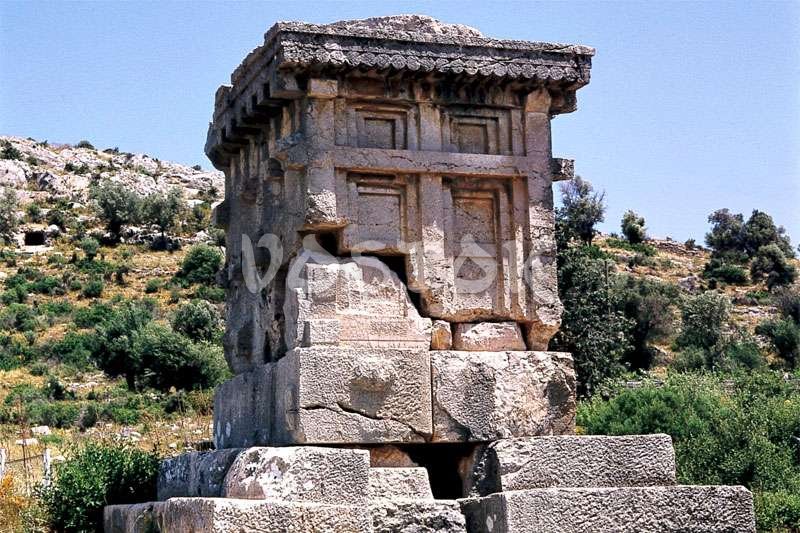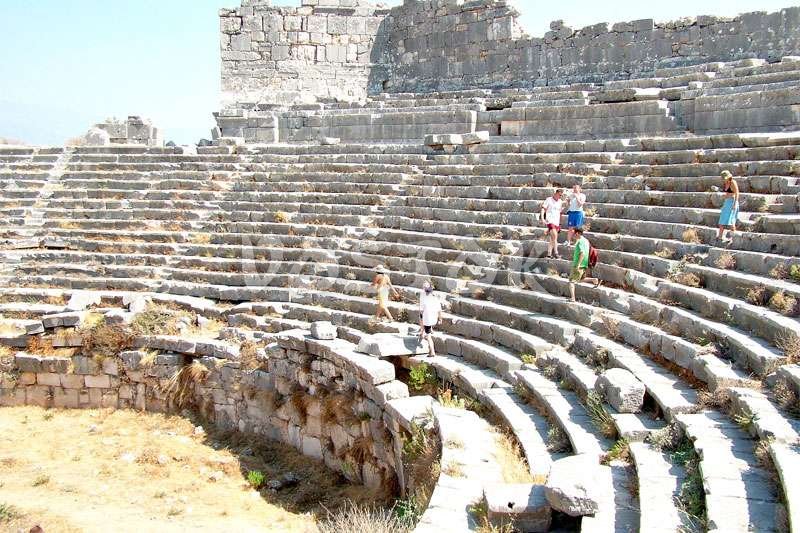Ancient city of Xanthos Turkey
The ancient city of Xanthos Turkey (Xantos, Xhantos, Xanths) became famous by the heroic deeds of its people - not once they burned their city so it did not get to the enemy. This is one of the oldest cities referred to in the "Iliad" of Homer and myth of Bellerophon. In ancient times Xanthos was the residence of the King Iobates. It was one of the most powerful cities of the time and the capital of the Lycian Union. Today it attracts tourists by the ancient ruins of Lycian tombs.
According to ancient Greek mythology Xanthos was founded by Sarpedon from Crete. The first official mention of Xanthos in the chronicles of the conquest of the Astyages (Median King of Lycia) dates back to 545 BC. When his army surrounded the city and defenders figured out that there was no chance of escape they set fire to their homes and property and continued to fight. As a result only eight families remained alive that accidentally were outside the city walls. When they returned they zealously began to rebuild the city. And soon Xanthos became as powerful as ever. In the end of 4 century BC Xanthos was conquered by Alexander the Great and after his death the city passed to the Ptolemaic Dynasty. In 168 BC Xanthos has reached its prosperity and became the capital of Lycia.
The story of self-immolation repeated in 42 AD and come down to us through the descriptions of Plutarch. During the civil war in Roman Empire the Xanthos ancient city was besieged by Brutus troops. After a terrible and bloody battle only 150 men and a few women remained alive. And again like a phoenix Xanthos revived and become even more beautiful than before. In the VIII-X centuries AD the Xanthos people constantly subjected to raids of the Arabs and in the end they were forced to leave the city.
The modern history of Xanthos Turkey began in 1842 with the appearing of the British traveler Charles Fellows. He spent a few months in the Xanthos ruins of the city collecting the best -preserved statues and sculptures so now most of them can be seen in the London's British Museum.
The Lycian tombs are most interesting in Xanthos. Harpy Tomb is 8.87 m tall and was named because of the images of two female birds. It is believed that they are mythical harpies. According to another version they are sirens that carry away the souls of the dead to the underworld.
The famous Xanthos Obelisk (V century BC) is a giant slab of stone where the longest inscription in the Lycian language of 250 lines is carved.
The foundation of the temple of Artemis, the Byzantine church, fortress walls of V century, well -preserved Roman Theater and acropolis, Byzantine basilica and monastery are among the other attractions of Xanthos Turkey.
We offer Fethiye Xanthos group tours as well as Xanthos private trips from Fethiye, Hisaronu, Ovacik, Oludeniz and Calis. The distance Fethiye - Xanthos is 63 km, Xanthos - Marmaris - 185 km.








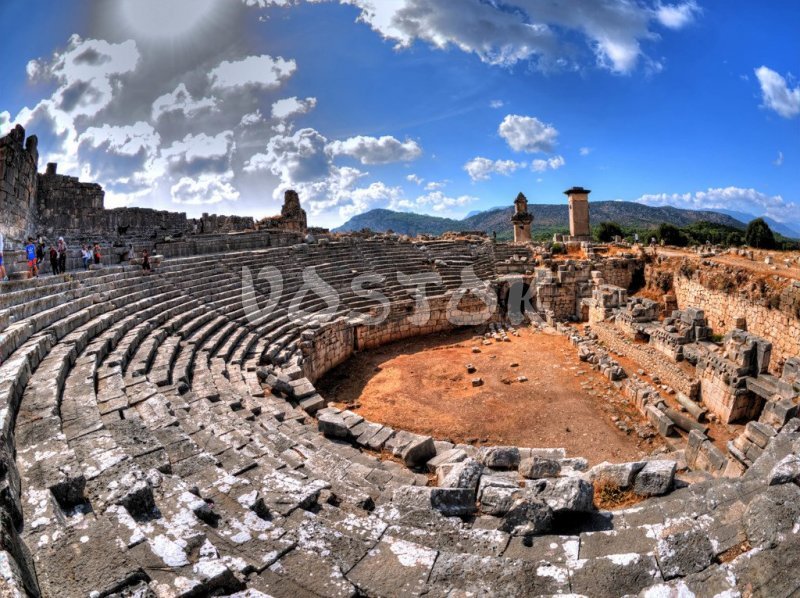





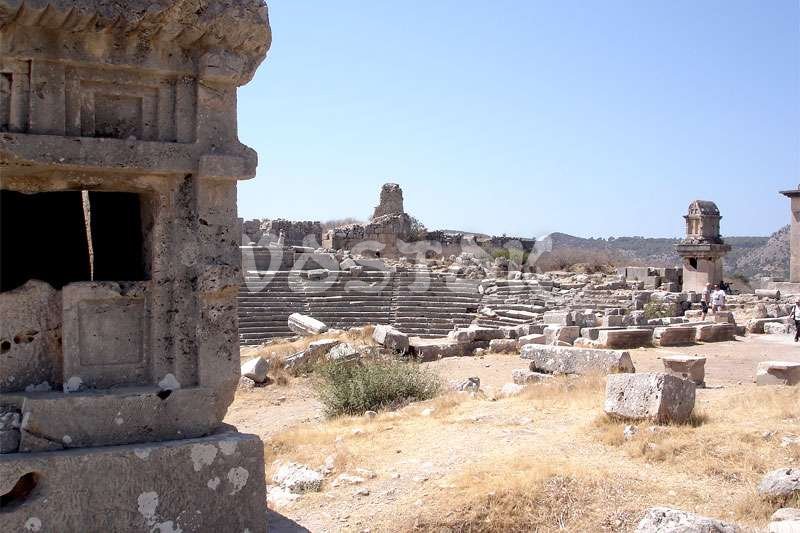

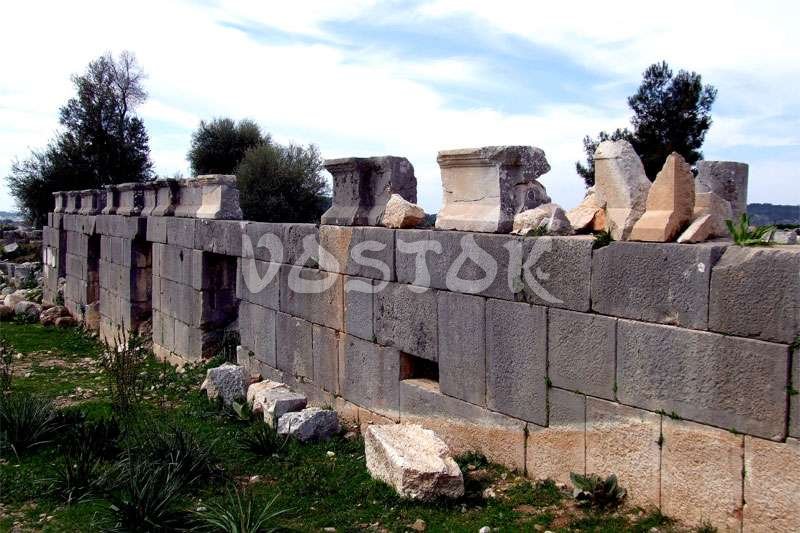

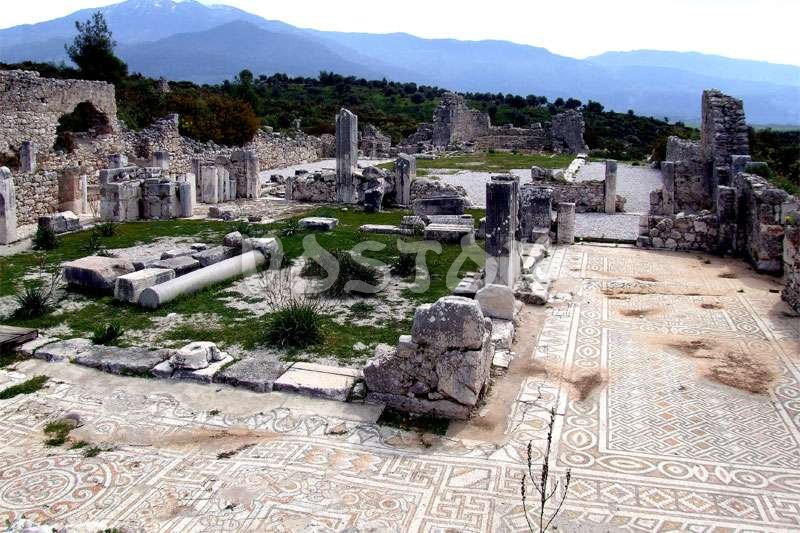





 More 4 Photos
More 4 Photos
